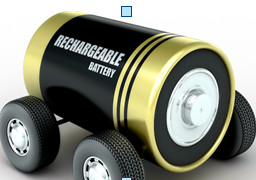




 |
 |
 |
|||
 |
 |
 |
 |
 | |
 |
 |
 | |


| 글로벌 트렌드 | 내서재담기 |


  |
 |  |
배터리 기반의 전기 자동차는 가까운 미래에 경쟁력을 갖출 수 있을까? 알려진 것처럼 낮은 에너지밀도, 너무 긴 충전 시간, 제한된 수명, 원재료의 희귀성 등 배터리 기술에 상당한 문제점들이 존재하기 때문에 경제적으로 경쟁력을 갖추기란 쉽지 않다. 배터리의 가격 대비 성능은 앞으로 향상되겠지만, 이를 대체할 수 있는 또 다른 기술들도 등장하고 있다. 어떤 기술들이 있으며, 우리의 미래에 어떤 영향을 끼칠 것인가?
2016년 4월 테슬라 모터스는 32만 5,000명 이상이 모델3의 사전 예약을 위해 각 1,000달러를 예치했다고 밝혔다. 이는 배터리 동력 전기자동차의 수요가 점점 더 늘어나고 있음을 잘 보여준다. <뉴욕 타임스>는 지난해 테슬라의 모델S와 모델X 판매량은 5만 대에 그쳤다고 보도했다.
그러나 모델3 사전 예약자들에게는 미안한 얘기지만, 새로운 차세대 자동차에 대한 소유욕이 마지막 구식 자동차에 대한 실망만을 안겨줄 수도 있다. 연료전지Fuel Cell 기술이 앞으로 수년 내 시장에 등장하게 된다면 현실이 될 수 있는 시나리오다.
<비즈니스 인사이더Business Insider>는 자동차 정보 분석지인 <모터 인텔리전스Motor Intelligence>와 전기자동차 전문 조사 기관 인사이드 이브Inside Evs의 판매 현황 자료를 인용해 2015년 미국인들이 구입한 전기차는 11만 4,000대에도 미치지 못했다고 보도했는데, 전체 자동차 시장의 점유율로는 1.4% 수준이고, 그것도 2014년보다 더 줄어들었다. 2016년에도 상황이 크게 나아질 것 같지는 않다. 모델3를 예약한 소비자 전부가 2017년에 실제 전기자동차를 배송받게 된다 하더라도, 점유율은 4.2%에 불과하다.
전기자동차 시장은 왜 빠르게 성장하지 못하는 것일까? 다음과 같은 치명적인 제약 요건들이 있기 때문이다.
▶ 충전소 부족
▶ 높은 전기 충전 비용
▶ 주행 거리를 제한하는 실망스러운 배터리 성능
▶ 고통스러울 정도로 긴 충전 시간
친 전기차 단체 ‘플러그 인 아메리카Plug In America’는 “120볼트 소켓을 이용하여 자동차 배터리를 완충하려면, 쉐비 볼트Chevy Volt의 플러그인 하이브리드는 10시간, 닛산 리프Leaf는 20시간이 필요하다. 240볼트의 아울렛과 충전소를 이용하는 경우에도 각각 4시간, 8시간이 소요된다.”고 밝혔다.
반면 연료전지 기술 분야의 연구들은 상당히 의미 있는 진보를 이뤄내고 있다. 플러그인 전기자동차도 제작 중인 BMW에서 연료전지 프로그램을 이끌고 있는 메르텐 정Merten Jung은 “연료전지 동력 전달 장치는 공해 물질을 배출하지 않으면서도 장거리 운전을 위해 빠르게 재충전할 수 있는 기술이다. 앞으로 시간이 지나면 배터리 기술이 진보하면서 전기자동차도 더 먼 거리를 달릴 수 있게 될 테지만, 재충전 시간으로 보자면 수소전지 모델과는 경쟁조차 되지 못할 것이다. 3~5분이면 수소연료 탱크를 가득 채우고 바로 출발할 수 있다.”고 말한다. 다시 정리하자면 재충전에 전기자동차는 4~20시간, 수소자동차는 3~5분 정도가 소요된다.
메르텐 정이 <디지털 트렌즈Digital Trends>에 설명한 바에 따르면, 연료전지자동차가 더 우월한 에너지 기술이라는 점을 제외하고는 전기자동차와 연료전지자동차 간에 거의 차이가 없다. “간단하게 생각하면 전기자동차에는 큰 배터리가 들어가는데, 이를 연료전지, 수소 탱크, 보다 작은 배터리로 교체하기만 하면 된다. 이외 전기 모터, 전자장치, 기어박스 등 동력 전달 장치는 동일하다. 그리고 운전자가 느끼는 주행감도 같다. 두 경우 모두 순수한 전기가 동력이니 운전자가 구별할 수 없을 정도다.”
하지만 자동차를 충전할 때는 이야기가 달라진다. 연료전지가 이 부분에 있어서 확실히 강점을 갖추고 있다. 델라웨어 공과대학의 유샨 얀Yushan Yan 교수는 “연료전지와 배터리는 모두 상업화에 있어 풀어야 할 각자의 과제를 안고 있는 청정 기술이다. 하지만 결정적 차이는, 짧은 주행거리와 장시간 충전 등 배터리 자동차가 풀어야 할 숙제는 소비자의 몫이 되어 버린다는 점이다. 반면 연료전지 자동차는 고객 경험에 있어 어떤 변화도 요구하지 않는다. 5분 이내에 충전되고 한 번의 충전으로 약 500킬로미터 이상 주행할 수 있기 때문이다.”라고 말한다.
연료전지가 풀어야 할 과제는 고객 경험이 아니라 엔지니어링 측면의 과제이다. 따라서 엔지니어로서 얀 교수는, 자동차 제조사들이 연료전지를 사용하지 못하는 근본적 문제, 즉 값비싼 백금 촉매제를 사용해야 하는 데 따른 상대적으로 높은 비용 문제를 해결하기 위한 연구를 수행 중이다.
얀 교수의 연구진은 백금 대체제를 찾기 위해 다른 금속 물질을 실험하고 있다. <네이처 커뮤니케이션Nature Communication>에 발표한 바와 같이, 이 연구진은 운영 환경을 산성에서 염기성으로 변경하면 훨씬 더 저렴한 니켈Nickel을 사용하여 동일한 결과를 얻을 수 있음을 발견했다. 이 결과는 소형화된 ‘고체 산화물 연료전지SOFC, Solid Oxide Fuel Cell’라 불리는 획기적 발명으로, 산화기반 박막 전극과 다공질 스테인리스 성질을 이용했다.
얀 교수는 “이 새로운 수산화 전해질 연료전지는 전례 없이 낮은 비용으로도 고성능을 낼 수 있다. 우리의 궁극적인 목표는 수산화 전해질 연료전지를 자동차에 장착하고, 소비자가 그 비용을 실제 감당할 수 있도록 하는 것이다. 도요타 자동차의 미라이Mirai에 장착한다면 아마 2만 3,000달러 수준이 될 것이다. 일단 구매 가능한 수준의 자동차가 출현하면 수소 경제를 지원하는 기반시설이 발전될 것이다.”라고 밝혔다.
소형화된 SOFC에 대한 다른 연구는, 연료전지가 드론에서 전화기에 이르는 모든 제품군의 리튬 이온 배터리를 대체할 수 있는 잠재력을 가지고 있음을 보여주고 있다. 한국의 포항공과대학 재료공학과 최경만 교수가 지휘하는 연구팀은 SOFC를 동력으로 한 드론이 1시간 이상 비행할 수 있음을 보여줬다. 리튬 이온 배터리를 이용하는 드론의 비행 가능 시간보다 훨씬 더 길다. 최경만 교수와 동료들은 <네이처>의 자매지인 <사이언티픽 리포트Scientific Reports>에 기고한 글에서, 스마트폰, 노트북, 자동차 등 높은 전력과 빠르게 전원을 켰다 끌 수 있는 능력이 필요한 모든 기기에서 SOFC가 기존 배터리를 대체할 수 있다고 밝혔다.
이 혁신적인 연구들은 배터리와 연료전지가 이전에 가졌던 다음과 같은 문제들을 거의 해결하고 있다.
▶ 연료 주입 기반시설 부족 문제 - SOFC는 메탄올, 천연가스, 심지어 휘발유를 포함해 광범위한 연료로 작동이 가능하다. 현재 자동차가 연료를 공급받고 있는 대부분의 장소에서 바로 공급이 가능하다는 얘기다.
▶ 높은 전력비용 문제 ? 전기는 생산과 전달에 드는 비용이 비싸다. 천연가스를 연료로 하는 SOFC는 배터리 충전에 필요한 전기를 기존 전력 시설보다 더 낮은 비용으로 생산할 수 있다.
▶ 원료 부족 - 리튬 이온 배터리는 공급이 비교적 부족한 원료들을 필요로 한다. 다른 대부분의 연료전지와 달리, SOFC는 백금과 같은 값비싼 촉매제를 필요로 하지 않는다.
이러한 사실들에 기반하여 우리는 다음과 같이 예측해본다.
첫째, 자동차 구매자들은 기반시설만 갖춰진다면 연료전지로 움직이는 자동차를 환영할 것이다.
BMW의 메르텐 정은 이렇게 말한다. “여러 나라들에서 기반시설 구축 움직임이 시작되고 있다. 독일 정부는 2018년까지 100여 개의 수소 충전소를 구축하려는 계획을 세웠는데, 최초의 네트워크 구축에는 충분한 숫자다. 여기에 2023년까지 400개를 더 추가할 계획이다. 최종적인 수소 충전소 구축 개수는 그때까지 얼마나 많은 수소 자동차가 도로를 달릴 것인지에 달려 있다. 기존의 주유소를 수소 충전소로 쉽게 전환할 수 있기 때문에 필요에 따라 단계별로 전환할 수 있다는 것이 장점이다. 유럽에서 이에 앞서가는 나라는 독일, 영국, 북유럽 국가들이다. 미국을 보면 캘리포니아에서 수소가 점차 인기를 얻고 있으며, 일본도 해당 기술에 대규모 투자를 단행하고 있다.” 이와 무관하지 않게 BMW는 2020년 이후 이들 국가에서 수소자동차를 출시할 계획을 세우고 있다.
둘째, 연료전지는 주택 소유주가 천연가스를 통해 전기 에너지를 생산하도록 해줄 것이다.
<사이언스>지에 따르면, 라이언 오하이어Ryan O’Hayre 교수가 주도하는 콜로라도 광업대학교 연구진은 미국의 각 가정이 연료전지를 통해 더 효율적으로 전기 생산을 하기 위해 천연가스를 사용할 수 있을 것으로 전망했다. 이 연료전지는 연료의 화학적 에너지를 전기 에너지로 변환해 바로 사용할 수 있다. 소비자들은 현재의 전기 설비보다 더 안정적이고 친환경적이며 비용도 저렴한 에너지원을 보유함으로써 많은 혜택을 입을 수 있을 것이다. 오하이어 교수는 다음과 같이 설명한다. “우리 연구는 고분자 전도성 세라믹 연료전지가 수소나 메탄올 연료로 전기를 발생시키면서도 기존 세라믹 연료전지보다 훨씬 더 낮은 온도에서 작동한다는 점을 밝혀냈다. 이러한 진전은 더 낮은 온도에서도 매우 높게 활성화하는 연료전지를 위한 새로운 공기 전극을 개발함으로써 가능했다. 그리고 우리는 연료전지의 복잡성과 비용을 대폭 낮춰주는 상대적으로 새로운 제조 방식을 사용했다.”
셋째, SOFC는 배터리 자동차에 대한 부정적인 인식을 없앨 뿐 아니라 분산화된 발전 시스템을 통해 전력비용을 절감시켜 줄 것이다.
<퓨얼 셀스Fuel Cells>란 잡지에 실린 미국 에너지부 산하 ‘퍼시픽 노스웨스트 국립연구소’의 연구결과에 따르면, 천연가스로 가동되는 고체 산화 연료전지로 현지에서 에너지를 공급하는 방식이 중앙 공급 방식보다 적어도 33% 더 저렴하다. 이 수치는 일부러 보수적으로 추정한 것이다. 왜냐하면 개별적으로 천연가스를 구입하려면 대규모로 구입하는 중앙 공급 방식보다 2배 정도 비싼 금액을 지불해야 하기 때문이다. 연구자들은 추후 연료전지가 대량생산되어 사용비가 낮아지면, 1킬로와트시kilowatt-hour(1시간당 1킬로와트의 사용 전력)에 대한 비용이 8.2센트가 되리라 본다. 이는 기존의 천연가스 발전소로부터 에너지를 구입하는 비용인 1킬로와트시 당 6.5센트보다 약간 더 비싸다. 그러나 전력이 전달되는 비용까지 고려하면 연료전지가 오히려 더 저렴하다. 발전소가 전력 라인을 통해 전기를 전송할 때 상당한 에너지 손실이 발생한다. 그러나 전기를 사용할 현지에서 전기를 생산하는 연료전지 방식은 이런 별도 비용이 발생되지 않는다. 이를 감안하면 연구자들은 그 최종 비용이 5.3센트로 떨어질 것이라 추정한다. 이렇게 되면 소매업자, 병원, 다가구 주택 등에서는 연료전지가 기존 전력 공급을 분명히 대체할 것이다.
넷째, 24시간 내내 운영되는 기저부하형 발전소를 제외하면, 연료전지로 가동되는 발전소가 기존 발전소를 대체할 매력적인 대안으로 떠오를 것이다.
<파워 엔지니어링Power Engineering>에 따르면 코네티컷, 델라웨어, 캘리포니아 주가 현재 대규모 연료전지 발전소를 도입하고 있다. 세계에서 가장 큰 연료전지 발전소인 ‘비콘 폴스Beacon Falls’가 2019년 코네티컷에 건설되어 6만 가구에 전력을 공급할 예정이다. 공장 전체 부지는 약 3만 2,000제곱미터로, 생산 전력량은 같지만 안정성이 덜한 태양력 발전소 건설에 약 32만 제곱미터의 부지가 필요한 것과 비교하면 10분의 1에 불과하다.
* *
References List :
1. The New York Times, April 7, 2016, “Tesla’s Model 3 Already Has 325,000 Preorders,” by Bill Vlasic. ⓒ 2016 The New York Times Company. All rights reserved.
http://www.nytimes.com/2016/04/08/business/teslas-model-3-already-has-325000-prospective-owners.html
2. Business Insider, January 6, 2016, “Electric Cars Are Cool But They’re Still Only for a Small Set of People,” by Eugene Kim. ⓒ 2016 Business Insider Inc. All rights reserved.
http://www.businessinsider.com/electric-cars-market-share-is-tiny-2016-1
3. Digital Trends, March 27, 2016, “While You’re Charging Your EV, BMW Is Preparing for a Hydrogen Future,” by Ronan Glon. ⓒ 2016 Designtechnica Corporation. All rights reserved.
http://www.digitaltrends.com/cars/bmw-is-preparing-for-a-hydrogen-future/
4. Ibid.
5. Nature Communications, January 14, 2016, “Nickel Supported on Nitrogen-Doped Carbon Nanotubes as Hydrogen Oxidation Reaction Catalyst in Alkaline Electrolyte,” by Yushan Yan, et al. ⓒ 2016 Macmillan Publishers Limited. All rights reserved.
http://www.nature.com/ncomms/2016/160114/ncomms10141/full/ncomms10141.html
6. Ibid.
7. Scientific Reports, March 1, 2016, “Micro Solid Oxide Fuel Cell Fabricated on Porous Stainless Steel: A New Strategy for Enhanced Thermal Cycling Ability,” by Gyeong Man Choi, et al. ⓒ 2016 Macmillan Publishers Limited. All rights reserved.
http://www.nature.com/articles/srep22443
8. Science, September 18, 2015, Vol. 349, Iss. 6254, “Readily Processed Protonic Ceramic Fuel Cells with High Performance at Low Temperatures,” by Ryan O’Hayre, et al. ⓒ 2015 American Association for the Advancement of Science. All rights reserved.
http://science.sciencemag.org/content/349/6254/1321
9. Fuel Cells, February 2015, Vol. 15, Iss. 1, “The Case for Natural Gas Fueled Solid Oxide Fuel Cell Power Systems for Distributed Generation,” by L. Chick, M. Weimar, G. Whyatt, and M. Powell. ⓒ 2015 John Wiley & Sons, Inc. All rights reserved.
http://onlinelibrary.wiley.com/doi/10.1002/fuce.201400103/abstract/
10. Power Engineering, February 2016, “Fuel Cells to Play Important Role in Power Generation,” by Russell Ray. ⓒ 2016 PenWell Corporation. All rights reserved.
http://www.power-eng.com/blogs/power-points/2016/02/fuel_cells_to_playi.html
 |  |
Why Batteries Are Not the Future
The announcement in April by Tesla Motors that more than 325,000 people had deposited $1,000 each for its new Model 3 suggests that consumer demand for battery-powered electric cars is growing. As The New York Times reported, last year Tesla sold only 50,000 of its current electric vehicles, the Model S and Model X.1
Unfortunately for the Model 3 buyers, their quest to own “the next new thing,” could quickly sour into the realization that they’re stuck with “the last old thing” when a superior technology comes along.
That’s precisely what the Trends editors anticipate will happen when fuel cell technology bursts onto the market in the next few years.
According to Business Insider, sales figures from Motor Intelligence and Inside EVs reveal that Americans bought less than 114,000 electric vehicles (EVs) in 2015. That’s just 1.4 percent of the car market, and it’s a smaller share than in 2014.2
The number isn’t likely to jump in 2016 either, because the Tesla 3 won’t be manufactured until next year. Even if all 325,000 of the customers who paid a deposit for the car actually take delivery in 2017, tripling the size of the EV market would only increase it to 4.2 percent.
Why hasn’t the market for EVs grown faster? Electric cars are severely limited by several drawbacks, including:
- A shortage of charging stations.
- High electricity costs.
- Disappointing battery capacity that limits the distance the cars can be driven between charges.
- Painfully long charging times. (According to the pro-EV organization Plug In America, “To recharge a completely empty car battery from an ordinary 120-volt socket, the Chevy Volt plug-in hybrid would need ten hours and the Nissan Leaf EV would need twenty hours. Using a faster 240-volt outlet and a charging station, the Volt recharges in about four hours and the Leaf in eight hours.”)
Meanwhile, researchers have made significant progress in perfecting fuel cell technology.
According to Merten Jung, who leads the fuel cell program at BMW, which also makes plug-in electric cars, “[A] fuel cell drivetrain combines zero-emissions mobility with the fast refueling time that’s needed for long-distance driving. Moving forward, electric vehicles will have longer ranges thanks to advances in battery technology, but the refueling time won’t be competitive with that of a hydrogen-powered model. It takes about three to five minutes to top up a hydrogen tank, and then you’re set to go.”3 To repeat: That’s three to five minutes, compared to four to twenty hours.
Jung explained to Digital Trends that, aside from the superior energy technology, there’s little difference between an electric vehicle and one powered by fuel cells.4 As he put it, “The basic idea is that you take an EV with a large battery pack, and you replace the pack with a fuel cell, a hydrogen tank, and a smaller battery. From there on, the drivetrain is identical; the electric motor, the electronics, the gearbox, it’s all the same?and they have the same driving experience, too. In both cases, it’s pure electric so you can’t tell the difference between the two when you’re behind the wheel.”
However, the difference becomes evident when the car needs to be recharged. That’s where fuel cells have an advantage.
According to University of Delaware Distinguished Engineering Professor Yushan Yan, “Both fuel cells and batteries are clean technologies that have their own sets of challenges for commercialization. The key difference, however, is that the problems facing battery cars, such as short driving range and long battery charging time, are left with the customers. By contrast, fuel cell cars demand almost no change in customer experience because they can be charged in less than five minutes and be driven for more than 300 miles in one charge.”5
The challenges for fuel cells are engineering challenges, not customer challenges. So, as an engineer, Yan worked on fixing the primary issue that keeps fuel cells from being used by car manufacturers: their relatively high cost, due to the need to use expensive platinum catalysts.
Yan’s team experimented with other metals to take the place of platinum. As they reported in Nature Communications, they discovered that they could get the same results by using nickel - which is a much cheaper metal - by changing the operating environment from acidic to basic.6 The result is a breakthrough called a miniaturized solid oxide fuel cell (SOFC) using an oxide-based thin-film electrode and porous stainless steel substrate.
According to Yan, “This new hydroxide exchange membrane fuel cell can offer high performance at an unprecedented low cost. Our real hope is that we can put hydroxide exchange membrane fuel cells into cars and make them truly affordable - maybe $23,000 for a Toyota Mirai. Once the cars themselves are more affordable, that will drive development of the infrastructure to support the hydrogen economy.”
Other research on miniaturized SOFCs demonstrates the potential for fuel cells to supplant lithium-ion batteries in everything from drones to phones.
At the Pohang University of Science & Technology (POSTECH) a team led by Professor Gyeong Man Choi of the Department of Materials Science and Engineering showed that a drone powered by an SOFC can fly for more than an hour. That’s much longer than a drone can stay in the air when it is powered by a lithium-ion battery.
As Choi and his colleagues reported in Scientific Reports, the sister journal of Nature, SOFCs could replace batteries in every device that needs high power density and the ability to turn on and off quickly, including smartphones, laptops, and cars. For example, a phone that runs on a fuel cell would only need to be charged once a week.
These breakthroughs have resolved almost all of the problems previously associated with both batteries and fuel cells, such as:
- Lack of fueling infrastructure: SOFCs can run on a wide range of fuels, including methanol, natural gas, and even gasoline. That means that they can be fueled in most places that cars are fueled right now.
- High cost of electricity: Electricity is expensive to generate and transmit. A natural gas fueled SOFC can produce electricity at a lower cost than the electric utility used to recharge batteries.
- Shortage of materials: Lithium-ion batteries require materials that are in relatively short supply. Unlike most other types of fuel cells, SOFCs don’t require the use of expensive catalysts like platinum in order to operate efficiently.
Looking ahead, we foresee the following developments emerging from this trend:
First, car buyers will embrace vehicles that run on fuel cells once the infrastructure is in place.
According to BMW’s Jung, “There are initiatives in various countries to set up an infrastructure. In Germany, the government has plans to install 100 hydrogen stations by 2018, which is sufficient to set up an initial network, and there will be up to 400 additional stations by 2023; the final number will depend on how many hydrogen-powered vehicles are on the road by then. The advantage is that you can convert existing gas stations to hydrogen stations, so you can build the network step-by-step. In Europe, the leaders are Germany, the United Kingdom, and Scandinavian nations. In the United States, hydrogen is becoming increasingly popular in California, and Japan is making a big investment in the technology.” Not coincidentally, BMW plans to target each of those markets when it introduces its hydrogen-powered cars after 2020.
Second, fuel cells will enable homeowners to generate energy from natural gas.
According to Science magazine, Colorado School of Mines researchers led by Professor Ryan O’Hayre determined that homes could use natural gas for power generation more efficiently through the use of fuel cells that convert the chemical energy of a fuel source into electrical energy close to where it is used. Consumers would benefit by having access to an energy source that would be more reliable, more environmentally friendly, and cheaper than the current electrical grid.8 As O’Hayre explains, “Our work demonstrates a proton-conducting ceramic fuel cell that generates electricity off either hydrogen or methane fuel and runs at much lower temperatures than conventional ceramic fuel cells. We achieved this advance by developing a new air electrode for our fuel cell that is highly active even at lower temperatures because it is a triple-conducting electrode (it conducts electron holes, oxygen ions, and protons all at the same time) and we applied a relatively new fabrication method that greatly reduces the complexity and cost for the fuel cell fabrication.”
Third, SOFCs will not only eliminate the economic rationale for battery vehicles, they will cut electricity costs via decentralized generation.
According to research from the Department of Energy’s Pacific Northwest National Laboratory published in the journal Fuel Cells, natural gas powered solid oxide fuel cells, located onsite, would provide energy for at least 33 percent less than a centralized supplier would charge.9 That estimate is deliberately conservative because it assumes that facilities that pay for natural gas individually would buy it at twice the rate that a centralized plant would pay due to its larger scale. Eventually, the researchers believe that fuel cells will be mass-manufactured, which would lower the cost of using them to 8.2 cents per kilowatt-hour. That’s not much more than the cost to buy energy from natural gas combined cycle plants at 6.5 cents per kilowatt-hour. However, fuel cells are even cheaper when the costs of distributing power are factored in; power plants lose energy as they transmit it through their power lines, and onsite fuel cells would not incur that cost. Therefore, the researchers estimate that the cost would drop to just 5.3 cents per kilowatt-hour; that’s a clear win for retailers, hospitals, and multifamily housing.
Fourth, power plants that are driven by fuel cells will increasingly provide an attractive alternative to other types of non-baseload power plants.
According to a report in Power Engineering, Connecticut, Delaware, and California are now home to large-scale fuel-cell power plants.10 Beacon Falls, the largest fuel cell power plant on the planet, will be built in Connecticut in 2019 and will produce electricity for 60,000 homes. The entire plant will take up just eight acres, compared to 80 acres for a solar plant that would generate the same amount of power and would be less reliable.
References
1. The New York Times, April 7, 2016, “Tesla’s Model 3 Already Has 325,000 Preorders,” by Bill Vlasic. ⓒ 2016 The New York Times Company. All rights reserved.
http://www.nytimes.com/2016/04/08/business/teslas-model-3-already-has-325000-prospective-owners.html
2. Business Insider, January 6, 2016, “Electric Cars Are Cool But They’re Still Only for a Small Set of People,” by Eugene Kim. ⓒ 2016 Business Insider Inc. All rights reserved.
http://www.businessinsider.com/electric-cars-market-share-is-tiny-2016-1
3. Digital Trends, March 27, 2016, “While You’re Charging Your EV, BMW Is Preparing for a Hydrogen Future,” by Ronan Glon. ⓒ 2016 Designtechnica Corporation. All rights reserved.
http://www.digitaltrends.com/cars/bmw-is-preparing-for-a-hydrogen-future/
4. Ibid.
5. Nature Communications, January 14, 2016, “Nickel Supported on Nitrogen-Doped Carbon Nanotubes as Hydrogen Oxidation Reaction Catalyst in Alkaline Electrolyte,” by Yushan Yan, et al. ⓒ 2016 Macmillan Publishers Limited. All rights reserved.
http://www.nature.com/ncomms/2016/160114/ncomms10141/full/ncomms10141.html
6. Ibid.
7. Scientific Reports, March 1, 2016, “Micro Solid Oxide Fuel Cell Fabricated on Porous Stainless Steel: A New Strategy for Enhanced Thermal Cycling Ability,” by Gyeong Man Choi, et al. ⓒ 2016 Macmillan Publishers Limited. All rights reserved.
http://www.nature.com/articles/srep22443
8. Science, September 18, 2015, Vol. 349, Iss. 6254, “Readily Processed Protonic Ceramic Fuel Cells with High Performance at Low Temperatures,” by Ryan O’Hayre, et al. ⓒ 2015 American Association for the Advancement of Science. All rights reserved.
http://science.sciencemag.org/content/349/6254/1321
9. Fuel Cells, February 2015, Vol. 15, Iss. 1, “The Case for Natural Gas Fueled Solid Oxide Fuel Cell Power Systems for Distributed Generation,” by L. Chick, M. Weimar, G. Whyatt, and M. Powell. ⓒ 2015 John Wiley & Sons, Inc. All rights reserved.
http://onlinelibrary.wiley.com/doi/10.1002/fuce.201400103/abstract/
10. Power Engineering, February 2016, “Fuel Cells to Play Important Role in Power Generation,” by Russell Ray. ⓒ 2016 PenWell Corporation. All rights reserved.
http://www.power-eng.com/blogs/power-points/2016/02/fuel_cells_to_playi.html
